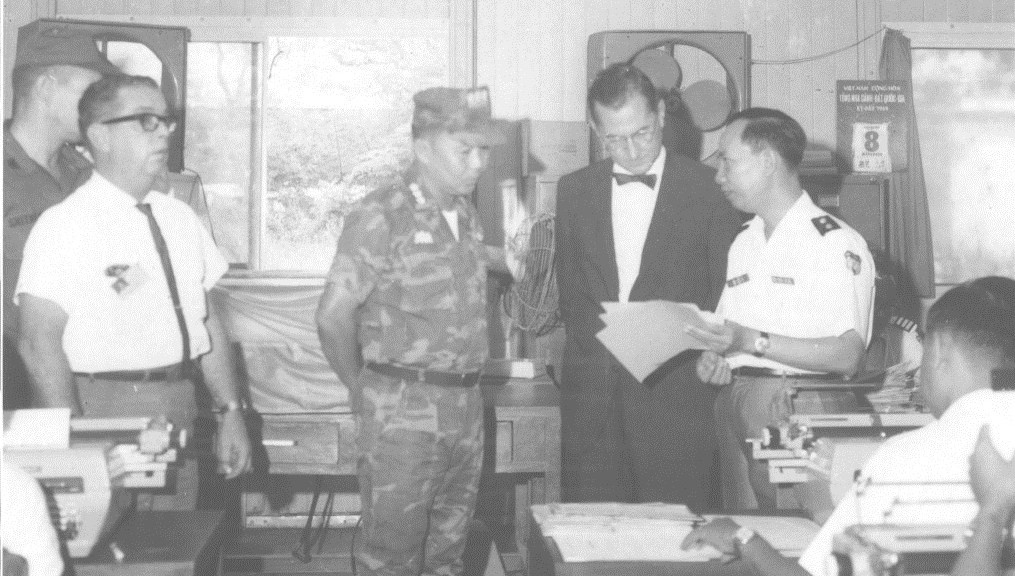Phoenix Program was an intelligence and counterinsurgency program designed to gather, analyze information and then “neutralize” (via capture, infiltration, torture, terrorism, and assassination) the infrastructure of the Viet Cong (National Liberation Front) in South Vietnam.
Phoenix was operated and executed under the direction of the United States Central Intelligence Agency (CIA) supported by U.S. Special Operation Forces, Special Forces Operatives from Australian Army Training Team Vietnam (AATIV) and South Vietnam’s security services. Although the program came to an end in December 1972, certain components remained in effect until Saigon fell in 1975.
Background
The Viet Cong usually operated in rural areas where they set up their own propaganda teams to intimidate, proselytize, and encourage the people to adhere to the Communist leadership. These team usually entered a hamlet or village at dusk. After a quick introduction and getting everyone’s attention, they would gather all villagers together for some small entertainment followed by propaganda on South Vietnamese government’s corruption and American atrocity. Finally, they would start to recruit people into their “liberation” committees, guerilla units and so on. These recruited civilians would then form a simple organization comprised of a Communist Party secretary, a supply, finance and social welfare unit called “Viet Cong infrastructure” (VCI) in virtually every village. VCI is the mechanism by which the Viet Cong spread their presence and influence throughout South Vietnam. They were backed by Viet Cong guerillas who could wage terror campaigns against targeted village chiefs and South Vietnamese officials to convince the villagers that support for revolution was the best course.
The general civilian population did not necessarily support Viet Cong’s values and ideals, but fear of repercussions by the communist brutal terror if they resisted left them with few options. With the passage of time, a significant number of people would readily join the Viet Cong, whose members were estimated between 70,000 to 100,000 by 1967.
CORDS & Phoenix Rising
In 1967, CIA and U.S. Military Assistance Command, Vietnam (MACV) joined hands together in order to keep a check on Viet Cong’s activities in Southern Vietnam. The primary purpose of this collaboration was to increase intelligence on this rising political threat as well as enhance South Vietnamese influence on the countryside. On May 9 1967, Civil Operations and Revolutionary Development Support (CORDS) was created and assumed authority over pacification efforts by the U.S. in South Vietnam. In order to improve intelligence on the political enemy, CORDS created Intelligence Coordination and Exploitation (ICEX) in July 1967. Five months after ICEX was set into motion, it was given a new emphasis and renamed Phoenix or “Phung Hoang” by the Vietnamese. CIA expanded its advisory and financial support to the program since 1968. By 1970, there were 705 American Phoenix advisers throughout 44 South Vietnamese provinces.
Phoenix Program
In order to wage an effective counterinsurgency, Phoenix, in contrast to ICEX, placed most of the responsibility on provinces and local districts in which District Intelligence and Operations Coordinating Centers (DIOCCs) were at the heart of the program.
First, DIOCC personnel compiled a list of known VCI operatives or suspects with their names, ranks and locations in their district. These lists were then sent to action forces including local militia, police and notably Provisional Reconnaissance Units (PRUs) who went to rural villages and hamlets to arrest and capture, or kill if they resisted, suspected Viet Cong supporters and sympathizers.
Once captured, Viet Cong suspects were taken to Province Interrogation Centers (PICs) and interrogated for further information on communists operations and its structure on this area. This information was passed to DIOCC-led Vietnamese chief who would then provide fresh “Search & Destroy” operations for the PRUs.
Provincial Reconnaissance Units
The PRUs became probably the most controversial element of Phoenix. PRUs were initially known as counter terror teams, which were originally created by South Vietnamese government and CIA in 1964 as part of their counter terror strategy. CIA’s “counter terror” or the use of terrorism as a means to stop “enemy civilians” – or to decrease civilian support for the Viet Cong, was first developed by political warfare pioneer Ralph Johnson who described the method as “turning communist terrorist tactics, which had proven effective, into a American-South Vietnamese pacification strategy”.
In order to counter rampant Viet Cong terror, Johnson started getting the most aggressive individuals from Mountain Scout teams and hiring mercenaries from Montagnard tribesmen, Chinese Nungs and Pathet Laos defectors then organized them into small units similar to what of Viet Cong’s armed propaganda teams. These counter terror teams would denounce Communist rule, make pro-South Vietnamese government talks and use terror against Viet Cong propaganda teams as what they had done to South Vietnamese officials in rural villages.
The public, however, did not feel comfortable with the term “terror”. In order to maintain support for the program’s efforts, the teams were given a more acceptable name, although this did not alter the tactics used. PRUs peaked at around 4,000 men spreading throughout South Vietnam.
